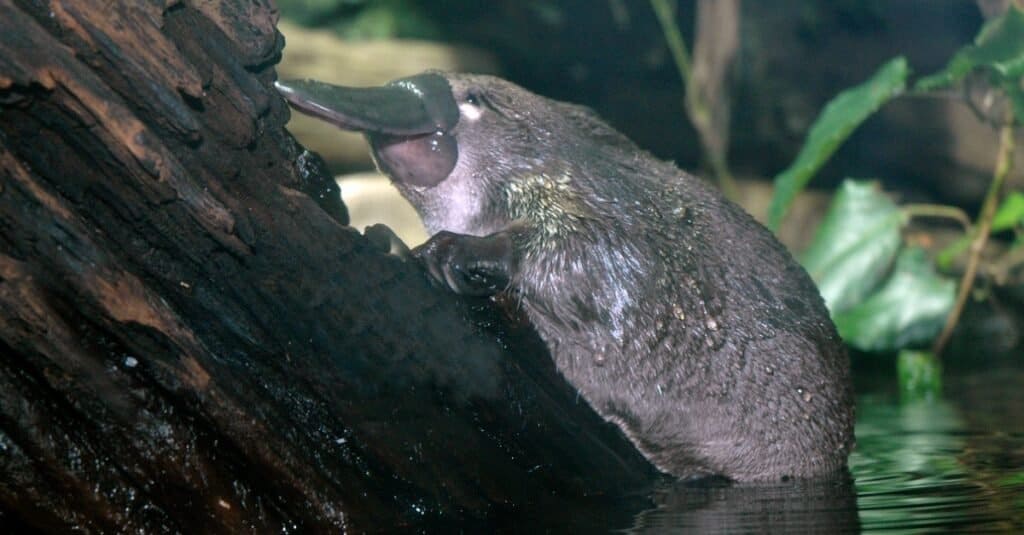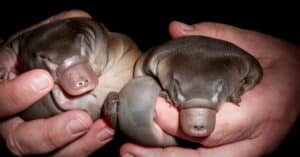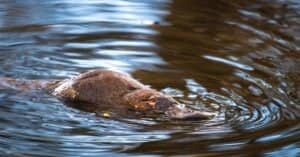The platypus is a hunter in the wild, eating insects, larvae, small fish, and worms. You may think that the platypus has no way of eating or catching their prey, given their wide and flattened duck-like bills. However, despite the platypus lack of teeth or any carnivorous dentition, it has something that most of its prey and predators do not expect –venom. It is surprisingly a poisonous animal and is one of the very few venomous mammals on the planet. It is unusual for a mammal to contain venom, but the platypus is all sorts of unusual anyway.
Everybody might have heard about platypuses, but being famous doesn’t make them less odd. The platypus is perhaps one of the strangest, most peculiar, and most interesting animals on Earth. It has a furry, mammalian body, a bill that looks like that of a duck, webbed feet like an otter, a beaver’s tail, lays eggs instead of giving birth, and inhabits freshwater rivers and streams. The platypus is like a mammal, a fish, a reptile, and a bird all in one! It’s like the platypus is a collection of animal whimsy! Despite the confusion on its appearance, the platypus is a solitary mammal found in Eastern Australia and Tasmania.
Do Platypuses Have Teeth?

Like birds, platypuses do not have teeth.
©Martin Pelanek/Shutterstock.com
Platypuses, like birds and ducks, do not have teeth. Instead, they have a bill that is similar to those of ducks. As bottom-feeders, the platypus uses its bill to forage insects, shellfish, and worms on the bottom of its water habitat. Despite its lack of teeth, the platypus still hunts effectively underwater using pouches in its cheeks. These cheek pouches store the platypus’ “catch” or food before it returns to the water surface to devour its prey.
Since platypuses do not have teeth, they do not chew their food. What they do, however, is mash their victims up along with gravel and bits of soil and rocks foraged along with their food until they break them down into little pieces they can swallow.
The platypus uses its beaver-like tail to swim and otter-like webbed feet to propel underwater. As a mammal, the platypus can’t stay underwater for too long. It can only remain submerged in water for up to five minutes until it surfaces back again to breathe air. The platypus bill is equipped with watertight nostrils to help it forage for food underwater. These nostrils remain sealed until the platypus swims back to the water surface to eat its forage.
What is the Platypus’ Bill Used For?

A platypus bill is used for foraging.
©iStock.com/Michel VIARD
The bill of the platypus is mainly used for foraging. Like most bird species that scoop down their food from the ground, the platypus hunts for shellfish and worms by foraging the river stream bed. Platypuses bills are not only a huge help in scooping prey, but are also good food trackers. The platypus’ bill is furnished with thousands of optimized nerve endings called electroreceptors. These electroreceptors can detect tiny electrical currents made by small muscular movements and contractions of potential prey. The platypus hunts underwater with its eyes and ears closed, relying heavily on these receptors.
The platypus may not possess any canines or molars to grab, tear, and grind prey, but its bills are enough to help in crushing and consuming its food.
Upon foraging the river stream bed for prey, the platypus goes back to the water surface with whatever prey it catches stored in its cheek pouches. After reaching the surface, the web-footed mammal will then mash its food up inside its flattened bill with the help of the bits of gravel and mud it has picked up from the bottom. The platypus does not have any dentition, so the hard bits of gravel help the mammal crush and “chew” its food.
What is the Platypus Bill Made Of?

The bill of a platypus is made of keratinized pads.
©Martin Pelanek/Shutterstock.com
The platypus bill is made of keratinized pads in place of mammalian teeth. These keratinized pads grind the insects and crustaceans gathered inside the platypus’ cheek pouches and sort them until the victims’ exoskeletons detach from the flesh.
Baby platypuses called hatchlings hatch with vestigial teeth on them. These teeth include one premolar and two molars on both sides of the upper jaw and two to three molars on each side of the lower mandible. However, since the platypus has evolved without teeth as it has no use for them, these vestigial teeth shed once the baby platypus leaves its burrow to hunt for food. As the baby platypus loses these vestigial teeth, the resorbed tissues in the mouth are replaced with horny pads.
Unlike most birds, the platypus has no serrations to grip slippery prey such as fish and reptiles. Instead, the platypus’ bill is smooth, flexible, rubbery, and feels like suede.
How Does A Platypus Eat and Digest its Food?
The platypus doesn’t have any teeth because it doesn’t need one. It crushes its food inside its bill through the help of gravel bits and mud pieces collected along with its food from the river’s stream bed. However, another interesting thing about the platypus is it doesn’t have a stomach. Like a quarter of fish species, the platypus does not have a stomach or sac that secretes digestive enzymes. Instead, the platypus has a gullet that directly connects to the intestines. This way, the bill breaks the food down and goes straight to the intestines for further digesting.
Do Platypuses Bite?
The platypus does not bite – in fact, it cannot bite due to its lack of teeth. Despite that, never underestimate the dangers a platypus can bring. Even though the platypus looks cute, it is dangerous with venom stings that can hurt humans and kill animals.
The platypus is a cute yet vicious animal. The male platypus has venomous spurs on some parts of its body, such as feet, elbow, and knee. These poisonous spurs are not deadly to humans but can kill animals such as dogs and paralyze another platypus.
The photo featured at the top of this post is © Martin Pelanek/Shutterstock.com
Thank you for reading! Have some feedback for us? Contact the AZ Animals editorial team.





